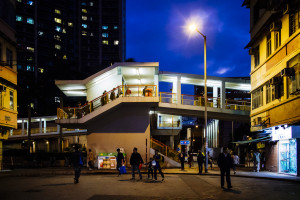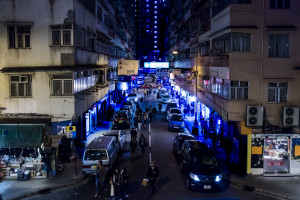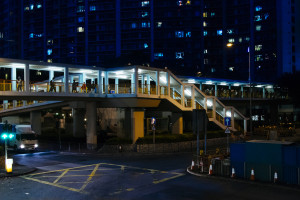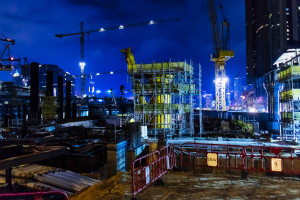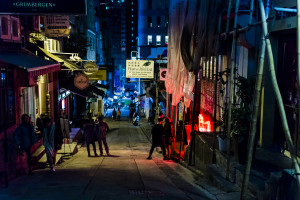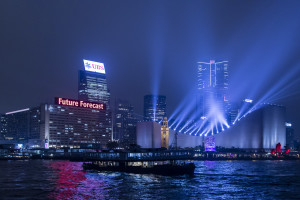Following on from my tutor’s comments about assignment 4 for I have revisited the images, to correct what I can only describe a lazy post-production.
Reprocessing
In the assignment, I was pursuing the effect of the mixed artificial li lighting that is abundant in Hong Kong. To show this and how the different types of light come through. To show this as I explain in my original submission, I used a combination of the white balance eyedropper and VSCO film preset in Lightroom. However, the lead to images with dark muddy shadow details which were extremely high contrast and didn’t do justice to original raw files.
I have now individually processed each image to ensure there is more detail in the shadows but also mindful to keep consistency across the pictures so that they still set well together as a set. This has been achieving through the use of the Lightroom adjustment brush to dodge and burn and also to brush in colour balance and saturation selectively in the pictures.
I have also corrected the verticals/perspective on the original images as most suffered from distorted perspective due to the combination of camera angle and the focal length of the lens. While not always an issue, here given the scrutiny the images are under – I felt it was an added distraction in the images that didn’t need to be there.
Re-edit
Overall, I was happy with the selection of six images I submitted to my tutor of this assignment. However, my tutor did raise a couple of queries for my consideration. One was the similarity to between image 1 and 3 and that image 4 was perhaps stepping a little away from the theme and overall quite a distracting busy image,
As soon as I relooked and image 4 in the pre-process stage I instantly removed it from the set – it doesn’t lean any weight to the set as a whole it is distracting. My tutor had suggested that a portrait orientation might have help, I don’t think so; perhaps if had it of been a setup portrait or shot with the old man’s cooperation it would have been better.
Earlier in the course, I looked at the work of Philip-Lorca DiCorsa’s “Huster’s”. In “Hustler’s” DiLorca used a technique of pre-setting up his scene and then waiting for subject to walk to the stage or invited them to pose. On reflection, this is the only way to go when trying to capture people successfully and control the lighting as desired.
I have replaced it with a cityscape where blue light is dominating the picture, except for a what could be seen as stubborn pieces of warm light. I feel this image rounds the set of nicely when placed at the end of the series, as it shows how the artificial blue light has replaced the natural blue of the first image.
It is for this reason while similar, images 1 & 3 remain in the reset bring a different perspective on light to the set. Image 1 shows the blue light of the sky against the warmth of the street lights and acts as a starting point for the set. Image 3 shows the effects of the mixes of light as it falls and envelopes its surroundings.
The Images.
Image 1
Image 2
Image 3
Image 4
Image 5
Image 6
Refection
Demonstration of technical and Visual Skills
As presented, in this re-work, I feel that the pictures are technically much better that the original presentation. I have used Lightroom room as a digital darkroom to manipulate the RAW files, to achieve the effect I was looking for. In hindsight, shooting the complete assignment handheld was a mistake, and tripod would have allowed for bracketed shots which could have then been layered, in Photoshop, to increase the dynamic range of the images. Also, I didn’t “work the scene enough” alternative shoot angles – something to keep in mind for future shoots, although, I should be experienced enough as a photographer not to be making such a school boy error.
Quality of outcome
Overall, I’m pleased with this set – as you will note I was apprehensive about the concept initially I was buoyed by my tutor’s comments, and I feel it has been a significant landmark in my journey through this course.
The theme I was trying to convey is how ambient artificial light, in a city like Hong Kong, transform the landscape once night falls. There is method to how the images are squenced they illustrate a jouney, both across the town from my workplace to the ferry (which was to be the subject for assignment 5) and through time, showing how the light changes in different times and places.
Demonstration of Creativity or Imagination
By presenting, the theme as a journey through time I have tried to explore for the viewer the different effects of the light, how it mixes, creating scenes which sunlight can not replicate – and nor would we want it to; a city at night belongs to a combination of colour temperatures. It’s where it can express its individuality. All cities are lit by the same sun, but no to cities, nor to areas of a city are ever lit by the same combination of lights.
Whether it is producing aetherial blue canyon, evident in image 2 or the extra-terrestrial environment of image 4, the set shows how things are different under the this unnatural light.
Context
This assignment came from within me if I’m honest I found the research difficult on this. I the idea was triggered by work of Sata Shinato, but I didn’t want to go too close to his images of neon signs. I wanted a more organic developed piece resulting in mini cityscapes.
Brassai said the light at night is magnificent, and that has only become a truer statement with every passing year.
Overall I’m very happy with the set, as I said above it is significant point in my journey I can see more clearly now how I need to develop my ideas and voice. I don’t in anyway this mean life on the course has got easier, just that the are clearer patches in the metaphorical fog

